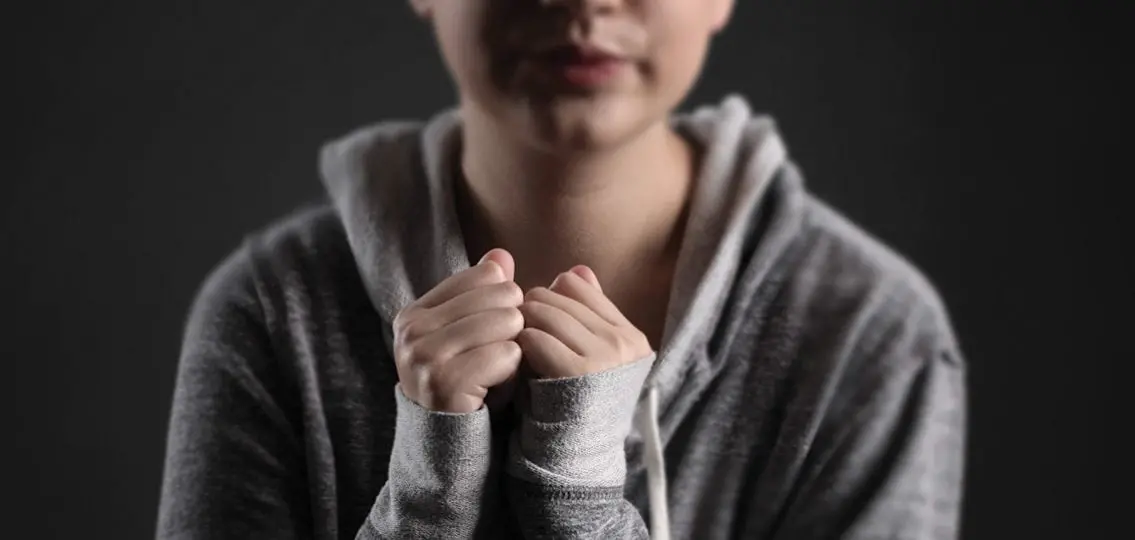“No one knows about me cutting. I’m so scared. I don’t want anyone to know because I know my mom will scream at me and yell at me and I don’t want to make her cry because then I get upset and I cut. I don’t cut too deep but I cut deep enough that there’s blood dripping down my legs.” –from Reddit’s self-harm online forum

This anonymous post from an online forum is disturbing, but it illustrates the intense feelings associated with non-suicidal self-injury. The behavior puts teens at risk for suicide and is being reported at an alarming rate, according to a recent study by the National Center for Injury Prevention and Control, a division of the Centers for Disease Control and Prevention (CDC).
Self-injury, which includes cutting, punching, burning, and other practices intended to hurt oneself, is often used to regulate overwhelming emotions, experts say.
Up to 25 percent of U.S. teens have experimented with self-harm at least once—more than any other age group.
Between 2009 and 2015, emergency room reports of self-harm rose 18.8 percent among 10- to 14-year-old girls and 7.2 percent among girls 15 to 19, the CDC report found. (Boys’ rates of self-harm, which are lower, remained stable over the same period.)
The sharp increase in reported self-harm cases could be a measure of teens’ reactions to an increasingly stressful world, says Michael Hollander, Ph.D., the author of Helping Teens Who Cut and the director of training and consultation for 3East, a residential therapy program for adolescents and young adults at McLean Hospital in Massachusetts.
Self-injury feels like an effective coping mechanism for some people. However, the practice is a clear indicator, says Hollander, that “your teen isn’t managing something in their lives right now.”
While parents should be concerned about the spike in reported cases, it’s unclear whether the number of teens who self-injure is actually rising, or if the stigma surrounding the behavior has decreased and more teens and families are reporting to emergency rooms for help, says Janis Whitlock, director of the Cornell Research Program on Self-Injury and Recovery and the author of the forthcoming Healing Self-Injury: A Compassionate Guide for Parents and Other Loved Ones.
But since rates for suicide, anxiety, and depression are all on the rise among teens, “it’s not too much of a stretch to assume that the same is true with non-suicidal self-injury,” says Whitlock.
Most self-injury begins between the ages of 11 and 15 and continues intermittently for five years or so, according to Whitlock. Parents should be aware that media depictions and social media chatter about the behavior can’t cause teens to self-injure. But it can trigger or help spread the behavior among vulnerable teens, Whitlock says.
Teens who self-injure intend to physically hurt themselves, but typically are trying to relieve negative emotions rather than end their lives.
Self-harm, however, “increases the likelihood that you will be suicidal at some point in your lifetime,” Hollander says. “The theory is that you’re kind of behaviorally rehearsing harming yourself, so you’re approximating suicidal behavior.” The bottom line? Parents should take self-harm seriously and get help for their teen.
3 Tips to Help Parents Navigate Self-Injury:
1. Focus on health
Discuss healthy ways to handle strong emotions and use self-harm as one example of an unhealthy method. However, don’t focus on self-harm alone. “Once adults shine a spotlight on any particular thing, it becomes an object of curiosity. So we don’t really want to do that,” Whitlock advises.
2. Be alert to signs of self harm
Self-harm may be a sign of depression, anxiety, or other mental illness, but not every teen with mental illness will self-harm. If your teen frequently dresses in long sleeves during hot weather, avoids bathing suits, or wears multiple wrist bands, they may be trying to hide marks on their body, Whitlock says.
3. Stay calm
If you think your teen is self-injuring, take an approach that is balanced and non-judgmental but direct. Screaming: “This is crazy! What the hell’s the matter with you?” won’t get you very far, says Hollander.

Instead, Whitlock suggests using gentle, compassionate language. For example: “I love you. I’m here for you no matter what. I want to understand and am capable of understanding what’s happening. I’m not going to be grossed out, and I’m not going to judge you. And I’m not going to punish you. I’m concerned that this might be happening and here’s why.”




